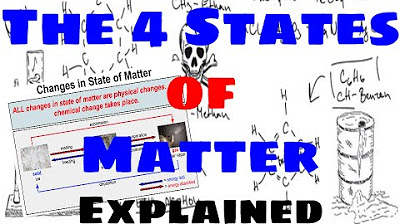Multiplying Decimals Explained: A Step-By-Step Review | Understanding Decimal Multiplication
Summary
TLDRIn this educational video, Mr. J offers a quick review on multiplying decimals, suitable for middle school to adult learners. He demonstrates how to eliminate decimals initially, multiply as with whole numbers, and then correctly place the decimal point in the answer by counting the digits after the decimal in the original problem. The video provides two detailed examples to illustrate the process, aiming to make the concept clear and accessible.
Takeaways
- 📘 **Remove Decimals First**: When multiplying decimals, start by ignoring the decimal points and treat the numbers as whole numbers.
- 🔢 **Multiply as Whole Numbers**: Perform the multiplication as you would with integers, focusing on the numerical values without considering the decimal places.
- 📌 **Count Decimal Places**: After the multiplication, count the total number of decimal places in the original numbers to determine where to place the decimal in your answer.
- 📐 **Align Decimal Places**: Ensure the number of decimal places in your final answer matches the sum of the decimal places in the original problem.
- 📝 **Carry Over Correctly**: When multiplying, remember to carry over numbers as you would in whole number multiplication.
- 🔄 **Add Zeros for Place Value**: When moving to the next digit in multiplication, add a zero for each place value you move to the left.
- 📉 **Handle Carried Numbers**: After carrying over, continue the multiplication process, adding the carried numbers to the subsequent results.
- 🎯 **Final Decimal Placement**: Place the decimal point in your final answer based on the count of original decimal places, not on the multiplication result itself.
- 📖 **Review Examples Carefully**: The script provides detailed examples to demonstrate the process of multiplying decimals, which is crucial for understanding the method.
- 👨🏫 **Educational for All Ages**: The method is applicable to anyone from middle school to adults continuing education, making it a universal mathematical skill.
Q & A
What is the primary focus of the video 'Math with Mr. J'?
-The primary focus of the video is to provide a quick review of multiplying decimals, which is helpful for middle school, high school, college, and adult learners.
What is the first step recommended in multiplying decimals according to the video?
-The first step recommended in multiplying decimals is to remove any decimals within the problem and treat the numbers as whole numbers for multiplication.
How does the video illustrate the multiplication of decimals with the first example?
-The video illustrates the multiplication of decimals by converting 'six and seven tenths times four' to '67 times 4', then multiplying as if they were whole numbers, and finally placing the decimal in the answer based on the original problem.
What is the result of the first example in the video?
-The result of the first example, '67 times 4', is '26.8', which is calculated by multiplying as whole numbers and then placing the decimal one place from the right to account for the single decimal in the original problem.
How does the video handle the multiplication of decimals with more than one decimal place?
-The video handles the multiplication of decimals with more than one decimal place by first removing the decimals, multiplying the resulting whole numbers, and then counting the total number of decimal places in the original numbers to determine where to place the decimal in the answer.
What is the final answer for the second example provided in the video?
-The final answer for the second example, '521 times 38', is '19.798', which is calculated by multiplying as whole numbers and then placing the decimal three places from the right to match the total number of decimal places in the original problem.
What is the significance of counting the number of digits to the right of the decimal in the original problem?
-Counting the number of digits to the right of the decimal in the original problem is significant because it determines how many digits should be to the right of the decimal in the final answer after multiplying.
How does the video ensure the accuracy of the decimal placement in the final answer?
-The video ensures the accuracy of the decimal placement by matching the number of digits to the right of the decimal in the final answer to the total number of decimal places in the original problem.
What is the main takeaway from the video regarding multiplying decimals?
-The main takeaway from the video is that when multiplying decimals, one should remove the decimals, multiply as if they were whole numbers, and then place the decimal in the answer according to the total number of decimal places in the original numbers.
What is the purpose of the placeholder zero mentioned in the video?
-The purpose of the placeholder zero mentioned in the video is to maintain the correct place value when multiplying numbers that have been rewritten without decimals, ensuring the accuracy of the multiplication.
How does the video conclude the process of multiplying decimals?
-The video concludes by emphasizing the process of removing decimals, multiplying as whole numbers, and then placing the decimal in the answer to match the original problem's decimal places, and encourages viewers to practice this method.
Outlines

This section is available to paid users only. Please upgrade to access this part.
Upgrade NowMindmap

This section is available to paid users only. Please upgrade to access this part.
Upgrade NowKeywords

This section is available to paid users only. Please upgrade to access this part.
Upgrade NowHighlights

This section is available to paid users only. Please upgrade to access this part.
Upgrade NowTranscripts

This section is available to paid users only. Please upgrade to access this part.
Upgrade NowBrowse More Related Video

The Four States of Matter - Explained

Lab Equipment - Explained

3. Gr 11 Life Sciences - Population Ecology - Theory 3 Mark Recapture Method

4. Gr 11 Life Sciences - Population Ecology - Worksheet 1

PENJASKES KELAS X - SOFTBALL

Introduction to Culture [AP Human Geography Review Unit 3 Topic 1]

Menentukan Mr ( massa molekul relatif )
5.0 / 5 (0 votes)